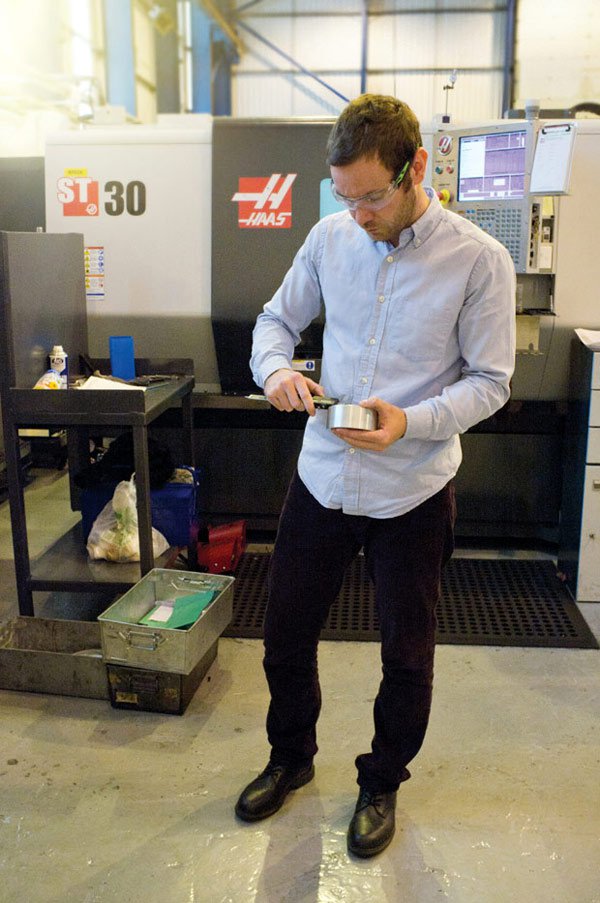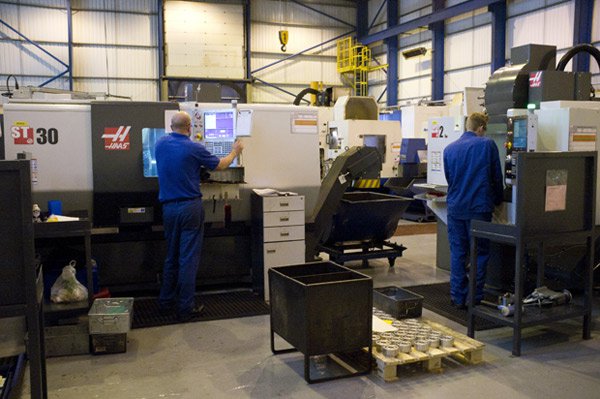Crabtree of Gateshead - Printing presses for the metal packaging industry

In the metal packaging industry, tins and cans are printed as flat sheets before they are shaped into the end product. This printing technique is referred to as “offset lithography” and offers a means of providing a high quality image on a strong and attractive container.
Crabtree of Gateshead is one of the world’s foremost manufacturers of quality metal decorating presses and coating machines. Crabtree’s presses are generally used to manufacture packaging such as bottle caps, drinks cans and biscuit tins.
The company has 240 staff, a figure which includes 130 employees that Crabtree has taken on in the past three years. It has also increased its production output from 30 presses per year to 60, doubling its production capacity. The machines are sold in over 90 countries worldwide with 98% being exported outside of the UK.
The Investec Top 100 for 2014 has been just been published and Crabtree of Gateshead are proud to announce that they have come in 66th position.
The Top 100 ranks UK companies by ‘average growth in turnover’ and uses data from the last 4 financial years to compile the list of companies that have come out on top.
Alan Rutter, operations manager said: “We’ve recently invested more than £1,000,000 in new plant and the expansion of our factory. We’re looking for continued improvement of our equipment and reducing manufacturing costs by altering workflow.”
April 2014 saw the installation of five Haas CNC machines in Crabtree’s machine shop at their Team Valley factory in Gateshead, comprising two ST-30 lathes, two Super Mini Mill 2s and a VF-2 vertical.

“The mini mills and lathes form a cell that replaces two older lathes with live tooling. A lot of our production is small batches, usually runs of anywhere from 1 to 60. We assemble 100% of our presses in house and have the capacity to machine 100% of our product. We also guarantee to provide spare parts for all our machines still in service around the world, supporting machines dating back to the 1960s, so we can find ourselves producing parts in runs of one or two.
“We closely studied our set-up times and found we could greatly increase our efficiency using the new Haas machines. For example, we’re currently producing a batch of pulley wheels, which will be used in larger assemblies in one of our Fastready Gen3 presses.”
The Crabtree Fastready presses can be connected together to form a single unit capable of printing more than one colour per pass. A can making company in China has recently connected six Fastready presses enabling a six-colour print in one pass.
“This will be a batch of 40 pulley wheels and when using our previous lathes with live tooling, the typical set-up time was over 2½ hours. Since replacing the old machines, we now do two operations on one of the ST-30s, then a final operation on one the mini mills. Since the set-ups are so simple on the Haas machines and the mills have 10,000 rpm spindles we’re saving 1½ hours in total between set and run,” explains Mr. Rutter. “Our operators love the Haas controls, because they are essentially the same format for both mills and lathes, it’s really easy to swap between the two.”
The ST-30 is the latest Haas high-performance turning centre – designed to provide heavy cutting ability, extreme rigidity and high thermal stability. It has a maximum cutting capacity of 533 x 660 mm, with maximum swings of 806 mm over the front apron and 527 mm over the cross slide.
The standard 30 hp spindle yields 275 ft-lb of torque at 700 rpm, and spins to 3400 rpm. For heavy cutting operations, an optional 2-speed gearbox increases torque to 840 ft-lb at 200 rpm. The A2-6 spindle nose is equipped with a 10″ hydraulic 3-jaw chuck. The machine is equipped with a 12-station bolt-on style tool turret.
“The new cell really pays dividends when we cut small batches,” concludes Mr. Rutter. “A huge advantage is the flexibility we have with separate mills and lathes, each can be put to use on different jobs. We are delighted with our choice of Haas machines, their accuracy and their overall speed and efficiency is very impressive,” he says. “Of course, price was a significant factor. Haas machines are very reasonable compared to other machines of similar specification.”
A huge advantage is the flexibility we have with separate mills and lathes, each can be put to use on different jobs. We are delighted with our choice of Haas machines, their accuracy and their overall speed and efficiency is very impressive.
Alan Rutter, Operations Manager




